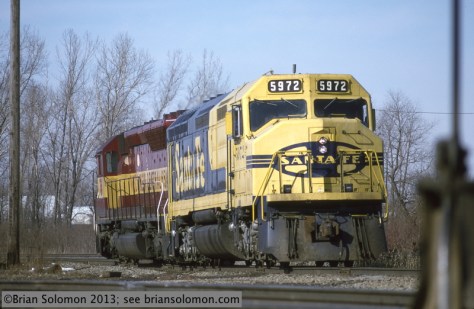In the dim early hours of September 9, 1995, I spotted Wisconsin Central’s recently acquired former Santa Fe FP45 leading a southward train through Duplainville, Wisconsin.
Normally I walked to work. I lived just a few blocks from the Pentrex Publishing offices on Grand Avenue. That morning, twenty years ago today, I’d been prowling around in my Mazda looking for angle to photograph the Wisconsin Central.
WC’s FP45 6652 was a one of a kind, and a prize to be scored! When I saw that engine roll across the diamonds at Duplainville, knew I’d be a little late to my desk.
WC freights tended to roll along, and chasing was difficult.
However, this southward freight had to make a meet at Vernon, south of Waukesha. The resulting delay was both long enough for me to make a swift drive on country roads to Burlington, Wisconsin, and for the sun to rise high enough to expose Kodachrome.

I set up in the park on the east side of the tracks. The Canadian Geese in the pond were an unanticipated bonus.
Tracking the Light posts new material every morning.
Please share Tracking the Light!













